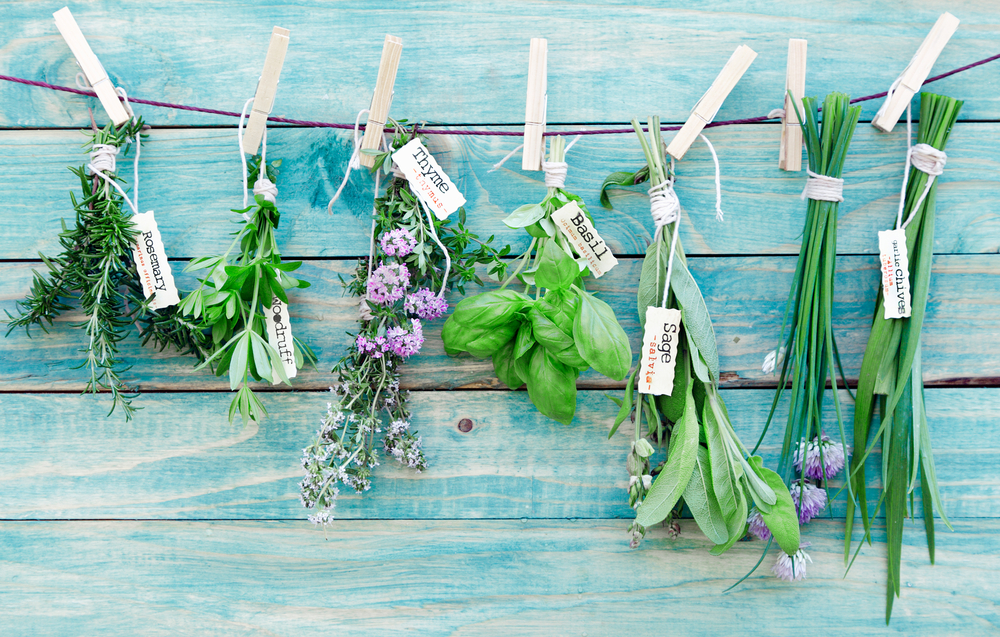
There are fewer things in the world more fragrant, tantalizing, and flavorful that fresh cut herbs. The only thing better is growing them yourself, and incorporating those tasty little herbs into your daily meals.
If you think that creating or keeping an herb garden indoors is time consuming or messy, then you can breathe a sigh of relief. Herb gardens are easy to care for, inexpensive, and require only a sunlit window and a handful of planter pots to thrive.
Some of the most beloved and tasty herbs will happily grow in your kitchen and provide you with the very best in culinary flair and flavor. If you are interested in growing your own fresh herb garden at home, we recommend following these few helpful tips to make your herb garden superb.
Find the Right Spot
Before you begin buying your seeds or seedlings, it is important to find just the right spot in your house to grow your herbs. Most herb gardens will thrive on a windowsill, but if you are short on space indoors, an herb garden will grow beautifully on a patio or pack porch.
If you don’t have a lot of ground space, herb gardens will grow perfectly well if you hang them vertically. Many people who choose vertical gardens have great success with repurposing and upcycling wooden shipping pallets.
Whichever spot you choose, be sure that your herbs can get 4 to 6 hours of sunlight. This is usually easiest with south and southwest-facing windows, but any west or east-facing window will work too.
Find Pots and Soil with Good Drainage
Herb roots are easily susceptible to root rot, and the best way to avoid this is to find pots that have proper drainage holes. Saucers, drain pans, or other liners to catch the water should be put under your pots. Plastic, ceramic, and metal pot liners will keep your windowsill dry, but clay is water absorbent, and should be avoided.
Good drainage not only comes from the pot you use, but also from the soil. Potting mix is a great choice because it is largely comprised of organic matter, which means that your herbs will get the right amount of drainage. To add a bit more of a punch to your soil, you can mix one part potting soil to one part vermiculite or perlite. Be sure to add a bit of fertilizer too.
Choose Your Herbs
The easiest and most commonly used herbs that you can grow in your kitchen include:
• Basil
• Oregano
• Thyme
• Cilantro
• Chives
• Rosemary
• Sage
• Parsley
• Mint
You can start your herb garden from seed or seedling, and most varieties of kitchen herbs will last a few months to a few years. Start with some of the very best of the chef’s herb pantry, and you will keep your kitchen singing with flavor year-round.
Watering and Growth
Watering your plants should be done on a schedule, but that schedule will not remain the same all year long.
Your watering schedule will depend on the size and age of your plant, how well your pot is draining, and the time of year. During the winter months, plants need much less water to keep them happy.
Generally, if the soil an inch below the surface feels dry, it is time to water you plants again. Avoid overwatering which causes root rot conditions.
Fertilize your herbs in the spring to keep them happy and healthy. A plant nursery can suggest just the right kind of organic fertilizer, which may come in soil or liquid form.
Harvesting Your Herbs
If you planted your herb garden from seed, it may take a few months before plant is mature enough to handle snipping. Herbs generally bounce back quickly if you do remove more than 1/3 of their growth at a time, and to be on the safe side, it is wise to wait for that section to grow back before another harvest.
It is also important that you pinch back (cut off) any flowers that grow on your herbs (unless you are growing lavender). To create flowers, plants give all of their nutrition and attention to the buds. By cutting back any flowers that grow, you ensure that your leaves will get all of the attention they deserve and produce a more flavorful crop.
All that is left to do is trim off your herbs a few leaves at a time and enjoy!

